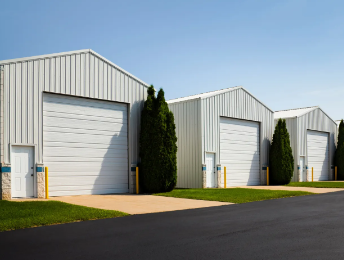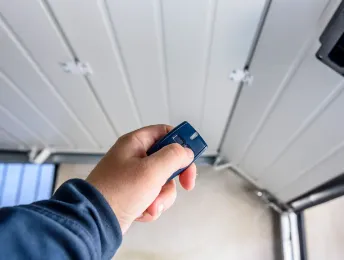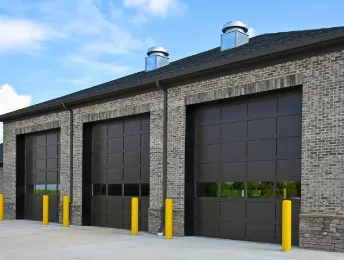The Most Common Garage Door Lock Issues & How to Fix Them
Published: May 1, 2025
A garage door lock may not seem complicated, yet when it fails, it puts your home’s security at risk. Homeowners often run into problems like a lock that won’t latch, turns loosely without engaging, or gets stuck entirely. These issues can affect both traditional and modern locking systems, and they usually creep up after years of exposure to the elements, lack of maintenance, or general wear and tear.
Let’s take a closer look at the most common lock issues — and what you can do about them.
What Can Go Wrong With a Garage Door Lock?
A lock that sticks, jams, or fails to engage can leave your space vulnerable. These issues aren’t always obvious at first, but they tend to get worse with time. It helps to understand what usually goes wrong and how to handle it.
Some of the most common lock problems include:

- A garage door slide lock that won’t slide fully into place due to rust or debris
- Sometimes the key turns but doesn’t catch the locking mechanism (worn internal pins)
- Loose or wobbly lock cylinders from stripped screws or worn-out housings
- Frozen or stiff locks in colder weather, especially on an older garage door handle lock
Simple fixes include lubricating the cylinder with graphite powder, cleaning out debris, or tightening loose screws. For a lock that won’t engage, try realigning the bolt or checking for obstructions in the track. If the key is sticking or turning loosely, replacing the core cylinder might solve the problem.
For more about full garage door security, read our article on Secure Your Garage Door.

How to Lock The Garage Door Manually
When the power goes out or the opener fails, knowing how to lock the garage door manually can come in handy. Not every system locks itself automatically, which is why having a manual garage door lock or garage door slide lock can be a reliable backup.
These locks are mounted inside the garage and physically slide into the track, preventing the door from opening. They don’t need electricity and are easy to use, even during emergencies.
In homes with an automatic garage door lock, power loss can interrupt its function. After a manual override, some models need to be reset to fully reconnect with the opener. Check your manufacturer’s instructions or speak with a technician if the lock doesn’t reconnect or function as expected.
If you’re unsure how your locking system works, a local garage door repair expert can inspect it and recommend any upgrades or adjustments.
Step-by-Step Guide to Manual Garage Door Locking
- Fully close your garage door and make sure it’s aligned in the track.
- Locate the garage door slide lock inside. It’s typically installed on the left or right side panel.
- Slide the lock bolt fully into the hole or slot in the metal track.
- If your slide lock has a padlock feature, insert and lock it for added security.
- Test from outside to make sure the door doesn’t move.
This process is quick, mechanical, and doesn’t rely on electricity. If your lock sticks during the process, clean the bolt channel and use a dry lubricant to keep it sliding smoothly.
Signs You Need a Garage Door Lock Replacement

There are moments when a fix won’t cut it — and that’s when a garage door lock replacement becomes the smarter choice.
Replacement makes sense in some cases:
- The locking mechanism feels loose or doesn’t catch properly
- The key sticks or turns without activating the lock
- The slide bolt no longer aligns with the track slot
- Rust or corrosion is visible on the lock’s body or bolt
Older garage door handle lock designs can wear down after years of weather exposure or repeated use. If it takes extra effort just to lock or unlock, it’s probably past its prime.
For homeowners with higher usage garages or who’ve recently experienced a break-in attempt, switching to an automatic garage door lock can offer extra convenience and safety. These locks engage electronically after each close and often provide a more secure seal than manual systems.
If your current lock feels unreliable, upgrading can be a smart move. You can always contact a trusted garage door company to explore your options and choose the right setup for your space.

Wrapping It Up
Garage door locks may seem like a small detail, but they play an important role in your home’s overall safety. When they start sticking, jamming, or feeling loose, basic upkeep like cleaning or tightening usually does the job. Other times, lock replacement makes more sense, especially if the system is aging or already showing signs of wear.
Now that you’ve gone through this guide, you understand the most common garage door lock issues, how to handle them, and when it’s time to upgrade. If you ever need guidance on the right solution, Up & Down Garage Doors is always here to offer clear, professional support and expert installation services. Feel free to call us anytime!
You may also like


